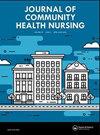提高自我效能和旁观者心肺复苏术率:一个培训师计划
IF 0.9
4区 医学
Q4 NURSING
引用次数: 0
摘要
摘要目的增加服务不足地区接受旁观者心肺复苏(BCPR)培训的社区成员数量,提高他们执行BCPR的自我效能水平,并为社区领导人实施培训师计划。设计定量,设计前后。方法参与者使用自动反馈装置人体模型完成BCPR训练,并完成训练前和训练后的调查,以测量自我效能水平。结果使用配对t检验(p<0.001)和Wilcoxon符号秩检验(p<0.01),所有调查问题从调查前到调查后都显示出统计学上的显著增加。结论社区领导人针对服务不足地区的BCPR培训,结合使用自动反馈人体模型,是提高自我效能水平和在院外心脏骤停(OHCA)期间接受BCPR培训的社区成员数量的独特方法。由社区领导领导的无临床证据BCPR培训提高了BCPR培训率和参与者的自我效能水平,从而在OHCA期间为受害者提供BCPR。本文章由计算机程序翻译,如有差异,请以英文原文为准。
Increasing Self-Efficacy and Bystander CPR Rates:A Train-the-Trainer Program
ABSTRACT Purpose Increase the number of community members within underserved areas trained in bystander cardiopulmonary resuscitation (BCPR), increase their self-efficacy levels to perform BCPR, and implement a train-the-trainer program for community leaders. Design Quantitative, before-and-after design. Methods Participants completed BCPR training with automatic feedback device mannequins and completed pre and post-training surveys to measure self-efficacy levels. Findings All survey questions showed statistically significant increases from pre to post using both a paired t-test (p < 0.001) and Wilcoxon Signed-Rank test (p < 0.01). Conclusions Targeting BCPR training to underserved areas by community leaders, combined with the use of automatic feedback mannequins, is a unique way to increase self-efficacy levels and the number of community members trained to perform BCPR during an out-of-hospital cardiac arrest (OHCA). Clinical Evidence Free BCPR trainings led by community leaders increases BCPR training rates and participants’ self-efficacy levels to deliver BCPR to a victim during an OHCA.
求助全文
通过发布文献求助,成功后即可免费获取论文全文。
去求助
来源期刊
CiteScore
1.40
自引率
10.00%
发文量
21
审稿时长
3 months
期刊介绍:
This innovative publication focuses on health care issues relevant to all aspects of community practice -- home health care, visiting nursing services, clinics, hospices, education, and public health administration. Well-researched articles provide practical and up-to-date information to aid the nurse who must frequently make decisions and solve problems without the back-up support systems available in the hospital. The journal is a forum for community health professionals to share their experience and expertise with others in the field.

 求助内容:
求助内容: 应助结果提醒方式:
应助结果提醒方式:


